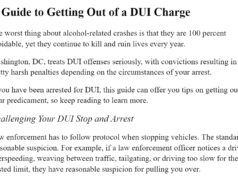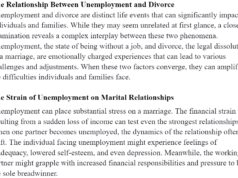Sponsored Content
By Mark Polson, an attorney who practices criminal law and DUI defense in Alabama.
While it is well known that racial disparities exist within the judicial system, seeing statistics reflecting this reality can help people understand it through an evidence-based ideology. The New York Times has analyzed the last several years of parole decisions in New York and has found that one in four white men are released on parole at their first hearing, compared with fewer than one in six black or Hispanic men.
This gap in parole sentencing particularly affects minority individuals who have committed small-level offenses like misdemeanor property crime or shoplifting. These types of criminal offenses are perpetrated by people who state and federal officials are now trying to keep out of prison altogether, and it is unfortunate that they are being hurt the most by unfair parole sentencing.
The racial disparity found in parole sentencing within New York is one of the starkest reminders that the state and federal criminal justice systems are in serious need of reform. Parole decisions were designed to be a progressive way to support good behavior, but have quickly morphed into a disordered system where inmates are only given around ten minutes to plead their case to the board.
The main problems with the parole system in New York are the level of automation that has been standardized by the state and the professional backgrounds of officials determining the futures of questioned inmates.
The parole board hardly ever sees an individual in person and typically views the inmates from the shoulder up on a video screen. The commissioners are regularly seen reading another inmate’s file while an interview is being conducted, and the board has not been fully staffed for several years.
The majority of the commissioners come from upstate New York and have backgrounds in law enforcement instead of rehabilitation. Their professional experience, along with the fact that most of the parole board is staffed by white men, perfectly explains why minority inmates are pardoned less often than their white counterparts. The commissioners have almost nothing in common with the inmates they are judging, even though minority inmates make up nearly 75 percent of the state’s prison population.
Although it is impossible to determine if race played a factor in a specific parole decision, the newspaper was able to look at 13,786 parole decisions for first-time male inmates spanning across the last three years. The parole board almost never released violent inmates of any race, denying nearly 90 percent of them after the initial interview.
But, minority inmates who had committed minor felonies were much more likely to be denied parole than white inmates with the same convictions. For example, 41 percent of white inmates convicted of third degree burglary were released, compared to only 30 percent of black and Latino inmates.
Sentencing imbalances become even larger when dealing with younger inmates. When looking at male inmates under 25 years old with no previous state prison sentences, the parole board released 30 percent of whites and only 14 percent of blacks and Latinos.
While the Times did not have access to the level of information supplied to the commissioners, it is still painfully obvious that black and Latino inmates have the odds stacked against them before they even begin their hearing.
It is up to the state to take a hard look at its parole sentencing process and determine how they can level the playing field for minority inmates and give them equal treatment under the law.



 Sign up for the Blue Virginia weekly newsletter
Sign up for the Blue Virginia weekly newsletter








